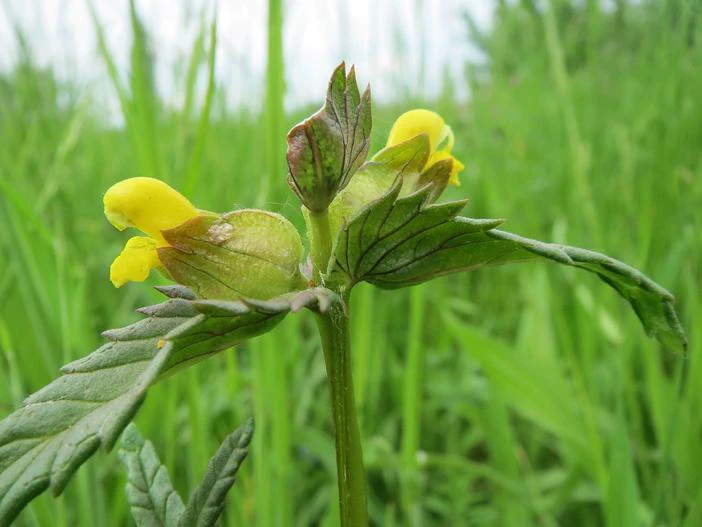Yellow Rattle
(Rhinanthus minor)
Yellow Rattle (Rhinanthus minor)
/
/

Andreas Rockstein
CC BY-SA 2.0
Image By:
Andreas Rockstein
Recorded By:
Copyright:
CC BY-SA 2.0
Copyright Notice:
Photo by: Andreas Rockstein | License Type: CC BY-SA 2.0 | License URL: https://creativecommons.org/licenses/by-sa/2.0/ | Uploader: anro0002 | Publisher: Flickr














































Estimated Native Range
Climate Requirements for Dallas, Texas
| This Plant | Your Site | Plant Suitability for Your Location | ||
|---|---|---|---|---|
| • Precipitation | 7" - 151" | 37" | Aquatic | Aquatic |
| • High Temp. | 40°F - 96°F | 96°F | Your summers may be too hot for this plant. | Too hot |
| • Low Temp. | -31°F - 43°F | 35°F | Your winter temperatures are normal for this plant | Excellent |
This plant may not grow well at your location - your precipitation is too high.
Summary
Rhinanthus minor, commonly known as Yellow Rattle, is an annual hemiparasitic herb native to a variety of grassland habitats, including meadows, pastures, and heathlands across Europe and parts of western Asia. It typically grows to a height of 15-50 cm (6-20 inches) and features a distinctive rattle-like seed capsule. The plant has a unique appearance with toothed leaves and small, yellow, bell-shaped flowers that bloom from May to September, which are somewhat showy and attract pollinators. The flowers are followed by seed pods that dry and rattle, giving the plant its common name.
Yellow Rattle is valued for its ability to suppress grass growth, thereby increasing biodiversity in wildflower meadows. It is often used in managed meadow creation to reduce the vigor of grasses, allowing a greater variety of wildflowers to flourish. This plant prefers full sun to partial shade and thrives in well-drained soils. It is relatively low maintenance, requiring minimal watering once established. In cultivation, it is primarily used for ecological purposes in wildflower meadows and naturalistic plantings. While it is generally disease-free, its parasitic nature should be considered when planting, as it may weaken certain neighboring plants.CC BY-SA 4.0
Yellow Rattle is valued for its ability to suppress grass growth, thereby increasing biodiversity in wildflower meadows. It is often used in managed meadow creation to reduce the vigor of grasses, allowing a greater variety of wildflowers to flourish. This plant prefers full sun to partial shade and thrives in well-drained soils. It is relatively low maintenance, requiring minimal watering once established. In cultivation, it is primarily used for ecological purposes in wildflower meadows and naturalistic plantings. While it is generally disease-free, its parasitic nature should be considered when planting, as it may weaken certain neighboring plants.CC BY-SA 4.0
Plant Description
- Plant Type: Herb
- Height: 0.5-1.5 feet
- Width: 0.5-1 feet
- Growth Rate: Moderate
- Flower Color: Yellow
- Flowering Season: Summer
- Leaf Retention:
Growth Requirements
- Sun: Full Sun, Part Shade
- Water: Medium
- Drainage: Medium, Fast
Common Uses
Bee Garden, Low Maintenance
Natural Habitat
Native to a variety of grassland habitats, including meadows, pastures, and heathlands
Other Names
Common Names: Yellow Rattle, Cockscomb, Engkallen
Scientific Names: Rhinanthus minor, Alectorolophus crista-galli subsp. stenophyllus, Alectorolophus glaber, Alectorolophus phallax var. hispanicus, Alectorolophus serotinus, Rhinanthus balticus, Rhinanthus glaber var. minor, Rhinanthus minor, Rhinanthus minor subsp. elatior
GBIF Accepted Name: Rhinanthus minor